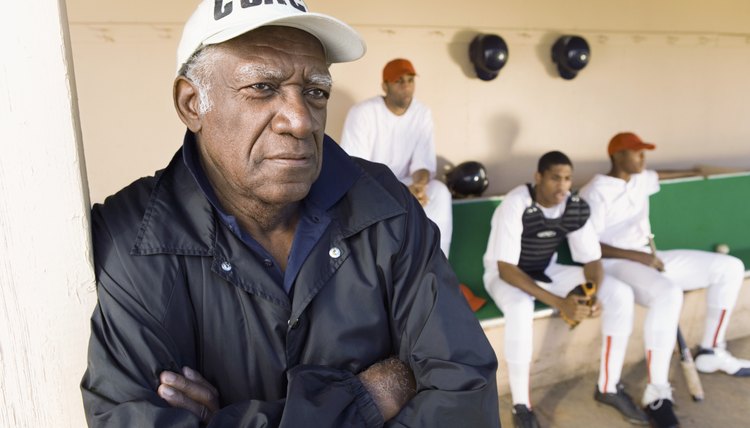What does fact checked mean?
At SportsRec, we strive to deliver objective content that is accurate and up-to-date. Our team periodically reviews articles in order to ensure content quality. The sources cited below consist of evidence from peer-reviewed journals, prominent medical organizations, academic associations, and government data.
- Weight-Control Information Network: Tips to Help You Get Active
- ACE Fitness: Plyometrics: Controlled Impact/Maximum Power
The information contained on this site is for informational purposes only, and should not be used as a substitute for the advice of a professional health care provider. Please check with the appropriate physician regarding health questions and concerns. Although we strive to deliver accurate and up-to-date information, no guarantee to that effect is made.
Techniques Used by Coaches to Improve the Performance of Athletes

Sports coaches play an integral role in maintaining the performance of a team and its athletes. According to the National Association for Sport and Physical Education, coaches take on a variety of responsibilities including team fitness rate, communication, motivation, strength and overall integration and performance. By adhering to a set of proven techniques, coaches of any sport can create and maintain a high standard of athletic ability and communication in their team.
Team-Building Techniques
Bad communication and poor strategy can cause your team to suffer on the field despite the outstanding performance of your individual athletes. Divide your team in half and simulate competitions that pit one half of the team against the other. Create your practice sessions around drills and exercises that emphasize team-building activities. To gain the most benefit out of this technique, break your team into specific groups -- such as offensive and defense -- and create drills and exercises that keep these individuals in a close proximity. Working together and learning when and how to depend on each others strengths is crucial for improving team performance.
Aerobic Routines
Aerobic exercises are the quickest methods for improving the athletic performance of individual athletes. Regular aerobic exercises such as athletic drills and sports practice can greatly improve your stamina while improving the amount of activity you can maintain on the field. Maximize the aerobic activity level in your sports practice by having your team run five or more laps at the beginning and end of each practice session as you deliver instructions through a megaphone.
Plyometrics
Jump training or plyometrics is a technique used by coaches to encourage explosiveness. Olympic athletes from eastern Europe started using plyometrics in the 1970s. By stretching and contracting muscles through depth and drop jumping, athletes can increase their hamstring strength by 44 percent according to the American Council on Exercise. Every coach will run their player through drills specific to their sport and their position within that sport. The drills are aimed at improving skill as well as overall speed, agility and quickness. These techniques should only be taught by a qualified coach and to those in excellent physical condition.
The Motivational Speech
Every team encounters its rough moments and performance dips. As coach, it is your duty to provide the necessary lift in morale that can spur your athletes to victory and greater field performance. Boost morale by delivering a speech before a game or during half-time that speaks to what your athletes are feeling. As coach you have the particular benefit of being the one that your athletes seek approval from; take this opportunity to show the genuine approval and praise that you may have been withholding during practice. Refrain from negative reinforcement and overcome past issues and failures by bringing the attention of your athletes back to the game at hand.
Diet Education
The National Association for Sport and Physical Education lists diet education as Standard 13 of the coaching guidelines. Instead of giving a lecture on diet and nutrition, give “homework assignments” that involve bringing a receipt from a grocery store or meal purchase that proves that they ate a healthy meal during the day. Give your athletes a list of healthy foods that they can take home and keep in their kitchen, and be a good example by eating healthy snacks during your sports practice.
References
Writer Bio
Based in the Appalachian Mountains, Brian Connolly is a certified nutritionist and has been writing professionally since 2000. He is a licensed yoga and martial arts instructor whose work regularly appears in “Metabolism,” “Verve” and publications throughout the East Coast. Connolly holds advanced degrees from the University of North Carolina, Asheville and the University of Virginia.
